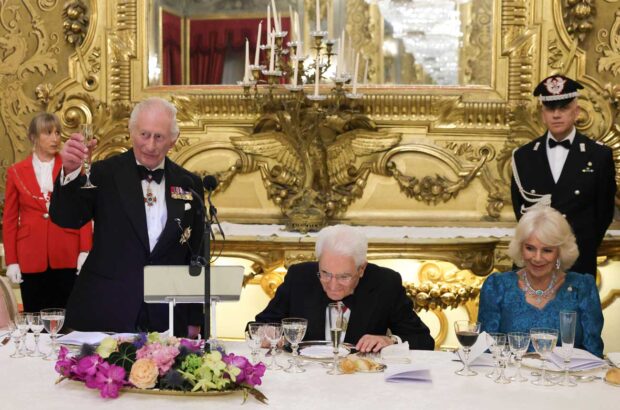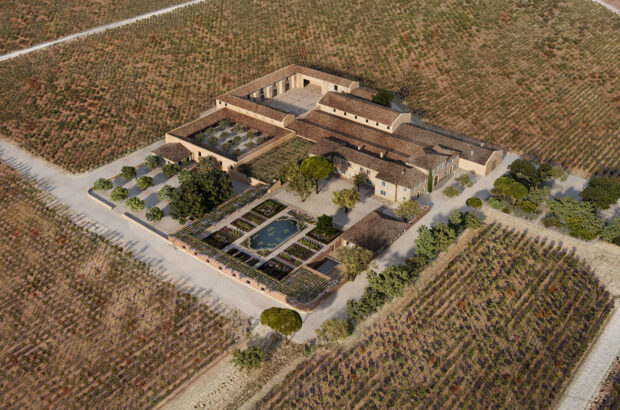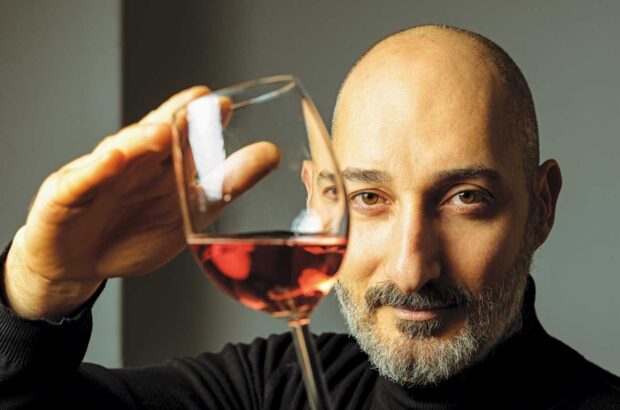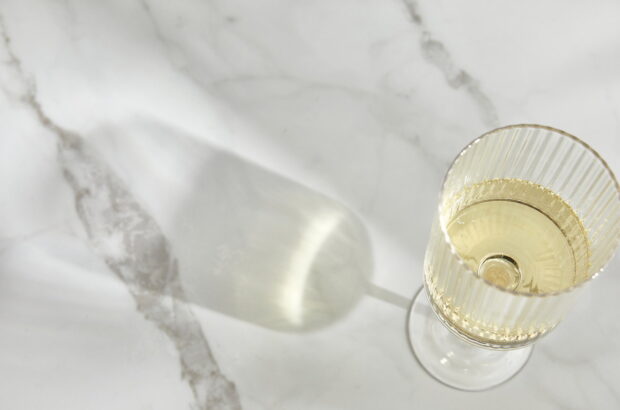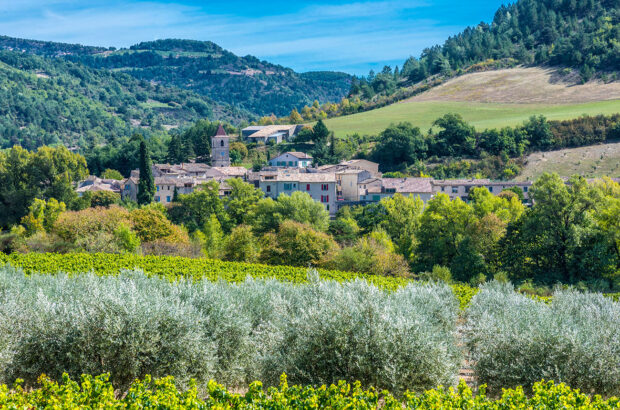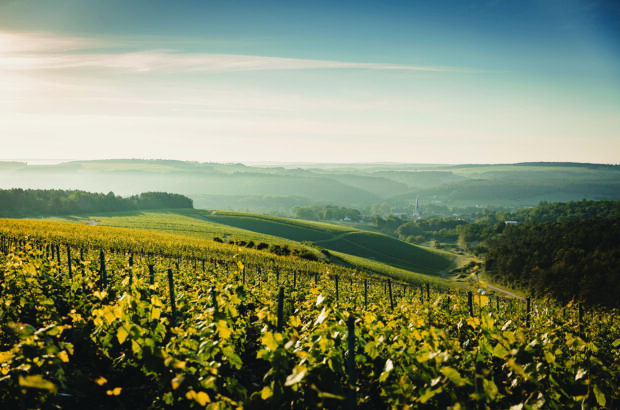Expressing Valpolicella’s true spirit is a matter of taste, reveals Michael Garner…
Ernest Hemingway knew exactly what to expect from his glass of Valpolicella. In his 1950 novel Across the River and into the Trees, his mouthpiece, the cantankerous Colonel Cantwell, refers to his favourite drop as ‘the light, dry red wine which was as friendly as the house of your brother’. His readers might struggle to find an example to fit that description today: Valpolicella is a wine style in real crisis. Production has plummeted, and the style Hemingway loved is being squeezed flat between two monoliths: Ripasso and Amarone. The boom in the popularity of Amarone has caused an even more stratospheric rise for Ripasso: the more Amarone is made, the more lees become available and the greater the quantity of Valpolicella being refermented on those lees.
Scroll down for Michael Garner’s top 8 Valpolicellas made with fresh and dried grapes
{"content":"PHA+QSBzZWNvbmQsIG1vcmUgaW52aWRpb3VzIHRocmVhdCBwdXRzIFZhbHBvbGljZWxsYeKAmXMgZnV0dXJlIGluIGZ1cnRoZXIgZG91YnQuIFNpbmNlIFJpcGFzc28gd2FzIG9mZmljaWFsbHkgcmVjb2duaXNlZCDigJMgaXQgd2FzIGZpcnN0IGluY29ycG9yYXRlZCBpbnRvIHRoZSBWYWxwb2xpY2VsbGEgZGVub21pbmF0aW9uIGluIDIwMDcsIHJlY2VpdmluZyBpdHMgb3duIERPQyBpbiAyMDEwIOKAkyBhIHRhc3RlIGhhcyBkZXZlbG9wZWQgZm9yIGEgcmljaCwgcmlwZSBzdHlsZSBvZiBWZXJvbmVzZSByZWQgd2luZS4gQXQgdGhlIHNhbWUgdGltZSwgYSBuZXcgcHJvdG90eXBlIG9mIFZhbHBvbGljZWxsYSBTdXBlcmlvcmUgaGFzIGJlZW4gZW1lcmdpbmcsIHVzaW5nIGVpdGhlciByaXBlciBncmFwZXMgdGhhdCBhcmUgaGFydmVzdGVkIGxhdGVyIChhIHByb2Nlc3Mga25vd24gYXMgc292cmFtYXR1cmF6aW9uZSkgb3IgZ3JhcGVzIHRoYXQgYXJlIHNlbWktIGRyaWVkIHVzaW5nIHRoZSBhcHBhc3NpbWVudG8gcHJvY2Vzcy4gSW4gYm90aCBpbnN0YW5jZXMgdGhlIGFpbSBpcyB0byBtYWtlIGEgd2luZSB3aXRoIGdyZWF0ZXIgY29sb3VyLCBib2R5IGFuZCBhbGNvaG9sLjwvcD4KPGRpdiBjbGFzcz0iYnJlYWtvdXQgcGFsZXR0ZS1hIHBhbmVsIHBhbmVsLWRlZmF1bHQiPjxkaXYgY2xhc3M9InBhbmVsLWJvZHkiPjxkaXYgY2xhc3M9J2JyZWFrb3V0LWNvbnRlbnQnPjwvcD4KPGgyPlZhbHBvbGljZWxsYSBpbiBhIG51dHNoZWxsPC9oMj4KPHA+VHJhZGl0aW9uYWxseSwgPHN0cm9uZz5WYWxwb2xpY2VsbGE8L3N0cm9uZz4gRE9DIGFuZCA8c3Ryb25nPlZhbHBvbGljZWxsYSBTdXBlcmlvcmU8L3N0cm9uZz4gRE9DIGhhdmUgYmVlbiBwcm9kdWNlZCBmcm9tIGZyZXNobHkgaGFydmVzdGVkIGdyYXBlcy4gVGhlcmUgYXJlIHNtYWxsIGRpZmZlcmVuY2VzIGJldHdlZW4gdGhlIHR3byBjYXRlZ29yaWVzIGluIHRlcm1zIG9mIHByb2R1Y3Rpb24gcmVndWxhdGlvbnMsIGJ1dCB0aGVyZSBjYW4gYmUgYSBtaWxsaW9uIG1pbGVzIGJldHdlZW4gdGhlbSBpbiB0ZXJtcyBvZiBzdHlsZS4gVW5mb3J0dW5hdGVseSwgbGFiZWxsaW5nIHJlZ3VsYXRpb25zIGRvbuKAmXQgaGVscCB0aGUgY29uc3VtZXIgdG8gaWRlbnRpZnkgd2hhdCBraW5kIG9mIFN1cGVyaW9yZSBpcyBpbiB0aGUgYm90dGxlLjwvcD4KPGRpdiBjbGFzcz0iYWQtY29udGFpbmVyIGFkLWNvbnRhaW5lci0tbW9iaWxlIj4KPGRpdiBpZD0icG9zdC1pbmxpbmUtMiIgY2xhc3M9ImlwYy1hZHZlcnQiPjwvZGl2Pgo8L2Rpdj4KPHA+T2NjYXNpb25hbGx5IGEgYmFjayBsYWJlbCB3aWxsIHN0YXRlIHRoYXQgdGhlIHdpbmUgaGFzIGJlZW4gcHJvZHVjZWQgZnJvbSA8ZW0+dXZlIGxlZ2dlcm1lbnRlIGFwcGFzc2l0ZTwvZW0+IChsaWdodGx5IGRyaWVkIGdyYXBlcykgb3IgcmVmZXIgdG8gZG91YmxlIGZlcm1lbnRhdGlvbiB3aGVyZSBkcmllZCBmcnVpdCBtdXN0IGhhcyBiZWVuIERyaWVkIGdyYXBlcyBkZXN0aW5lZCBmb3IgYXBwYXNzaW1lbnRvIGF0IE1vbnRlIGRhbGzigJlPcmEgaW50cm9kdWNlZCBhdCBhIGxhdGVyIHN0YWdlIHRvIGtpY2stc3RhcnQgYSBzZWNvbmRhcnkgZmVybWVudGF0aW9uOyBvdGhlcndpc2UgaXTigJlzIGEgcXVlc3Rpb24gb2Yga25vd2luZyB0aGUgaG91c2Ugc3R5bGUgYW5kIHRoZSBpbmRpdmlkdWFsIHByb2R1Y2VyLjwvcD4KPHA+SW4gYWRkaXRpb24gdG8gVmFscG9saWNlbGxhIGFuZCBWYWxwb2xpY2VsbGEgU3VwZXJpb3JlLCBhIHZpbmV5YXJkIGNhbiBwcm9kdWNlIHRocmVlIG90aGVyIHN0eWxlcyBvZiB3aW5lLCB3aGljaCBhcmUgYmFzZWQgb24gdGhlIGFwcGFzc2ltZW50byBwcm9jZXNzLiBUaGlzIGludm9sdmVzIGRyeWluZyBncmFwZXMgb24gd29vZGVuIHJhY2tzIG9yIHBsYXN0aWMgdHJheXMgaW4gd2hhdCBpcyBrbm93biBhcyBhIGZydXR0YWlvIG9yIGRyeWluZyByb29tLjwvcD4KPHA+PHN0cm9uZz5SZWNpb3RvPC9zdHJvbmc+IGlzIGEgc3dlZXQgZHJpZWQtZ3JhcGUgd2luZSwgd2hpbGUgPHN0cm9uZz5BbWFyb25lPC9zdHJvbmc+IGlzIHRoZSBkcnkgdmVyc2lvbiBvZiA8c3Ryb25nPlJlY2lvdG88L3N0cm9uZz4uIFJpcGFzc28gaXMgYSB5b3VuZyBWYWxwb2xpY2VsbGEgcmVmZXJtZW50ZWQgb24gdGhlIGxlZXMgb2YgZWl0aGVyIG9mIFJlY2lvdG8gb3IgQW1hcm9uZS4gSW4gYWRkaXRpb24sIHRoZSBWYWxwb2xpY2VsbGEgYXJlYSBjb250YWlucyB0d28gc2VwYXJhdGUgc3ViLXpvbmVzOiBDbGFzc2ljbyBhbmQgVmFscGFudGVuYSwgd2hpY2ggcHJvZHVjZSBhbGwgc3R5bGVzLjwvcD4KPGRpdiBjbGFzcz0iYWQtY29udGFpbmVyIGFkLWNvbnRhaW5lci0tbW9iaWxlIj4KPGRpdiBpZD0icG9zdC1pbmxpbmUtMyIgY2xhc3M9ImlwYy1hZHZlcnQiPjwvZGl2Pgo8L2Rpdj4KPHA+CjwvZGl2PjxkaXYgY2xhc3M9J2JyZWFrb3V0LWJ1dHRvbnMnPjxkaXYgY2xhc3M9J3Jvdyc+PC9kaXY+PC9kaXY+PC9kaXY+PC9kaXY+CjxwPlRoaXMgbmV3IHN0eWxlIGlzIG9mdGVuIHJlZmVycmVkIHRvIGFzIG1pbmktQW1hcm9uZSBhbmQgbWF5IGNvbnRhaW4gc29tZSByZXNpZHVhbCBzdWdhciAodXN1YWxseSBhYm91dCA1Zy9sKS4gVGhlIHdvcnJ5aW5nIHJlY2VudCB0cmVuZCBpcyB0aGF0IHNvdnJhbWF0dXJhemlvbmUgb3IgYXBwYXNzaW1lbnRvIG1ldGhvZHMgYXJlIG5vdyBiZWluZyB1c2VkIGZvciBldmVyeWRheSBWYWxwb2xpY2VsbGEgRE9DIHdpbmVzLCBhbmQgYSBzbWFsbCBudW1iZXIgb2YgZ3Jvd2VycyBhcmUgdXNpbmcgYSBwcm9wb3J0aW9uIG9mIGNvbmNlbnRyYXRlZCBncmFwZXMgdG8gZW5yaWNoIHRoZWlyIHdpbmVzLjwvcD4KPGRpdiBjbGFzcz0iYWQtY29udGFpbmVyIGFkLWNvbnRhaW5lci0tbW9iaWxlIj48ZGl2IGlkPSJwb3N0LWlubGluZS00IiBjbGFzcz0iaXBjLWFkdmVydCI+PC9kaXY+PC9kaXY+CjxwPlRoZXJlIGhhcyBiZWVuIGEgc2lnbmlmaWNhbnQgYmFja2xhc2ggYWdhaW5zdCB0aGUgbmV3IFZhbHBvbGljZWxsYSBzdHlsZS4gQWxlc3NhbmRybyBDYXN0ZWxsYW5pIGF0IENh4oCZIExhIEJpb25kYSBzYXlzOiDigJhWYWxwb2xpY2VsbGEgaGFzIGl0cyBvd24gaWRlbnRpdHk6IGl04oCZcyBlaXRoZXIgdGhlIGZyZXNoZXIsIGV2ZXJ5ZGF5IHN0eWxlIHRoYXQgbW9zdCBwZW9wbGUgYXJlIGZhbWlsaWFyIHdpdGggb3IsIGFzIFN1cGVyaW9yZSwgYSBtb3JlIGNvbXBsZXggd2luZSB3aGljaCBjYW4sIHdpdGggYWdlLCByZXNlbWJsZSBmaW5lIEJ1cmd1bmR5LuKAmSBJbiAxOTk4LCBDYXN0ZWxsYW5pIGRlY2lkZWQgdG8gZGVkaWNhdGUgdGhlIGZhbWlseeKAmXMgQ2FzYWxWZWdyaSB2aW5leWFyZCB0byB0aGUgcHJvZHVjdGlvbiBvZiBWYWxwb2xpY2VsbGEgQ2xhc3NpY28gU3VwZXJpb3JlLCB1c2luZyBmcmVzaCBmcnVpdCBvbmx5LiBUaGlzIHdlbnQgYWdhaW5zdCB0aGUgZ3JhaW46IFZhbHBvbGljZWxsYSBoYXMgaW52YXJpYWJseSBiZWVuIHByb2R1Y2VkIGZyb20gd2hhdCByZW1haW5zIGluIHRoZSB2aW5leWFyZCBhZnRlciB0aGUgaW5pdGlhbCBzZWxlY3Rpb24gb2YgZnJ1aXQgaGFzIGJlZW4gaGFydmVzdGVkIGZvciBBbWFyb25lIG9yIFJlY2lvdG8uPC9wPgo8cD5UaGVyZSBhcmUgYSBncm93aW5nIG51bWJlciBvZiBwcm9kdWNlcnMgd2hvIGZpcm1seSBvcHBvc2UgdGhlIGlkZWEgb2YgZW5oYW5jZWQgVmFscG9saWNlbGxhIGFuZCB0aGUgdXNlIG9mIGFwcGFzc2ltZW50byBmb3Igd2luZXMgb3RoZXIgdGhhbiBBbWFyb25lLCBSZWNpb3RvIGFuZCBSaXBhc3NvLCBpbmNsdWRpbmcgQWxlc3NhbmRyYSBaYW50ZWRlc2NoaSBvZiBNb250ZSBEYWxs4oCZT3JhLiDigJhPdXIgaWRlYSBpcyB0byBtYWtlIGEgVmFscG9saWNlbGxhIHRoYXQgaXMgYWxsIGFib3V0IHRoZSB2aW5leWFyZCBhbmQgb3VyIHRyYWRpdGlvbmFsIHZhcmlldGllcywgb25lIHdpdGggYSB0cnVlIHNlbnNlIG9mIHBsYWNlLOKAmSBzaGUgc2F5cy4g4oCYQXBwYXNzaW1lbnRvIGlzIGEgdGVjaG5pcXVlIHRoYXQgbWF5IGJyaW5nIGNvbmNlbnRyYXRpb24sIGJ1dCBjb21wcm9taXNlcyB0aGF0IGZyZXNobmVzcyBhbmQgZWxlZ2FuY2Uu4oCZPC9wPgo8ZGl2IGNsYXNzPSJhZC1jb250YWluZXIgYWQtY29udGFpbmVyLS1tb2JpbGUiPjxkaXYgaWQ9InBvc3QtaW5saW5lLTUiIGNsYXNzPSJpcGMtYWR2ZXJ0Ij48L2Rpdj48L2Rpdj4KPHA+U2ltaWxhcmx5IGF0IEFudG9saW5pLCBQaWVyIFBhb2xvIEFudG9saW5pIGFuZCBoaXMgYnJvdGhlciBTdGVmYW5vIGhhdmUgcmVsZWFzZWQgYSBWYWxwb2xpY2VsbGEgQ2xhc3NpY28gU3VwZXJpb3JlIG1hZGUgZXhjbHVzaXZlbHkgd2l0aCBmcmVzaGx5IGhhcnZlc3RlZCBncmFwZXMuIOKAmFF1aXRlIHNpbXBseSwgd2XigJlkIGhhZCBlbm91Z2ggb2YgaGVhdnksIG92ZXItc3dlZXRlbmVkIFZhbHBvbGljZWxsYTogd2UgcHJlZmVyIHRoZSBlbGVnYW5jZSBhbmQgZnJlc2huZXNzIHRoYXQgcmVwcmVzZW50cyB0aGUgd2luZeKAmXMgdHJ1ZSB0aXBpY2l0YSzigJkgaGUgZXhwbGFpbnMuPC9wPgo8aDI+VHVybmluZyB1cCB0aGUgdm9sdW1lPC9oMj4KPHA+R3Jvd2VycyB3aG8gY2hvb3NlIHRvIG1ha2UgYSByaWNoZXIgc3R5bGUgb2YgVmFscG9saWNlbGxhIFN1cGVyaW9yZSwgaG93ZXZlciwgYWxzbyBoYXZlIHRoZSBjb3VyYWdlIG9mIHRoZWlyIGNvbnZpY3Rpb25zLiBMdWNhIEVyYmljZSBvZiBWaWxsYSBFcmJpY2UgaW4gdGhlIE1lenphbmUgdmFsbGV5IG1haW50YWlucyB0aGF0IGdyYXBlcyB3aXRoZXJlZCBzbGlnaHRseSBvbiB0aGUgdmluZSBnaXZlIGl0cyBNb250ZSBUb21ib2xlIFZhbHBvbGljZWxsYSBTdXBlcmlvcmUgZGVzaXJhYmxlIGNoYXJhY3RlcmlzdGljczog4oCYV2Ugc3RhcnRlZCB1c2luZyBzb3ZyYW1hdHVyYXppb25lIHRvIGdldCBhIHdpbmUgd2l0aCBhIG1vcmUgaW50ZW5zZSBjb2xvdXIsIGhpZ2hlciBhbGNvaG9sLCBncmVhdGVyIHN0cnVjdHVyZSBhbmQgYm9keSwgYW5kIGZld2VyIGdyZWVuIG5vdGVzIG9uIHRoZSBub3NlLiBJdCBhbHNvIG1lYW5zIHRoYXQgd2UgaGF2ZSB0byBjYXJyeSBvdXQgYSBwcmV0dHkgc2V2ZXJlIGhhcnZlc3QgYW5kIHNlbGVjdCB0aGUgcmlnaHQgZnJ1aXQsIGJ1dCB3ZSBiZWxpZXZlIGl04oCZcyB3b3J0aCBpdCzigJkgaGUgc2F5cy48L3A+CjxwPkEgY29tbW9uIGFwcHJvYWNoIGlzIHRvIGVtYnJhY2UgYSBtaWRkbGUgd2F5LCBjb21iaW5pbmcgYm90aCBmcmVzaCBhbmQgZHJpZWQgZnJ1aXQuIEZvciB0aGUgcGFzdCAxNSB5ZWFycywgQ2HigJkgUnVnYXRl4oCZcyBNaWNoZWxlIFRlc3NhcmkgaGFzIGRvbmUgc28gaW4gdGhlIHByb2R1Y3Rpb24gb2YgQ2FtcG8gTGF2ZWkgVmFscG9saWNlbGxhIFN1cGVyaW9yZS4g4oCYV2UgZmluZCBpdCBnaXZlcyB0aGUgd2luZSBhIGdyZWF0ZXIgaW50ZW5zaXR5IG9mIGZydWl0IGFuZCBpbXByb3ZlcyBkcmlua2FiaWxpdHkuIFRoZSBzdHJ1Y3R1cmUgaXMgZW5oYW5jZWQsIHNvIHRoZSB3aW5lIGlzIG1vcmUgc3VpdGFibGUgZm9yIHdvb2QgYWdlaW5nLuKAmTwvcD4KPHA+VGhlcmUgYXJlIHdpbmVyaWVzIHRoYXQgbWFrZSBWYWxwb2xpY2VsbGEgdXNpbmcgMTAwJSBkcmllZCBmcnVpdC4gU2luY2UgdGhlIG1pZC0xOTgwcywgbW9kZXJuLWRheSBsZWdlbmQsIElsbGFzaS1iYXNlZCBSb21hbm8gRGFsIEZvcm5vIGhhcyBwcm9kdWNlZCBWYWxwb2xpY2VsbGEgU3VwZXJpb3JlIHdpdGggZnJ1aXQgZHJpZWQgZm9yIGFib3V0IHNpeCB3ZWVrcy4gSXQgaGFzIGEgcmVwdXRhdGlvbiBhcyBvbmUgb2YgdGhlIGFyZWHigJlzIGxvbmdlc3QtbGl2ZWQgd2luZXMsIHByb3ZpZGluZyBpbnNwaXJhdGlvbiBmb3Igb3RoZXIgZ3Jvd2VycyBpbiB0aGUgdmFsbGV5LiBKdXN0IGEgZmV3IGh1bmRyZWQgeWFyZHMgZnJvbSB0aGUgbGFuZG1hcmsgQ2FzdGVsbG8gZGkgSWxsYXNpLCB0aGUgVHJhYnVjY2hpIGZhbWlseSBtYWtlcyBhIGNoYXJtaW5nLCB5b3V0aGZ1bCBWYWxwb2xpY2VsbGEgZnJvbSBmcmVzaCBncmFwZXMsIGFzIHdlbGwgYXMgdHdvIFZhbHBvbGljZWxsYSBTdXBlcmlvcmUgd2luZXMgdXNpbmcgZnJ1aXQgZHJpZWQgZm9yIGRpZmZlcmVudCBsZW5ndGhzIG9mIHRpbWUuIOKAmFdlIGxpa2UgdG8gdmFyeSB0aGUgZHJ5aW5nIHBlcmlvZCBiZXR3ZWVuIGFyb3VuZCAxNSBkYXlzIFtmb3IgVGVycmEgZGkgU2FuIENvbG9tYmFub10gYW5kIDI1IGRheXMgW2ZvciBUZXJyYSBkZWwgQ2VyZW9sb10s4oCZIGV4cGxhaW5zIEdpdXNlcHBlIFRyYWJ1Y2NoaS4g4oCYVGhpcyBmaW5lLXR1bmVzIHZhcmlvdXMgYXNwZWN0cyBvZiBhcm9tYSBhbmQgZmxhdm91ciwgYnV0IHRoZSBtYWluIGRpZmZlcmVuY2UgaXMgb25lIG9mIHdlaWdodCBhbmQgcmljaG5lc3MgaW4gdGhlIG1vdXRoLuKAmTwvcD4KPHA+SW4gdGhlIENsYXNzaWNvIHpvbmUsIFJhZmZhZWxlIEJvc2NhaW5pIG9mIHRoZSBNYXNpIHdpbmVyeSwgd2hpY2ggbWFrZXMgZmluZSBleGFtcGxlcyBvZiBib3RoIGZyZXNoLSBhbmQgZHJpZWQtZnJ1aXQgVmFscG9saWNlbGxhIFN1cGVyaW9yZSwgaGlnaGxpZ2h0cyB0aGUgYXJlYeKAmXMgbWlsbGVubmlhLWxvbmcgdHJhZGl0aW9uIG9mIHByb2R1Y2luZyB3aW5lIGZyb20gZHJpZWQgZ3JhcGVzLiDigJhXZSBoYXZlIG92ZXIgMiwwMDAgeWVhcnPigJkgZXhwZXJpZW5jZSBvZiB3b3JraW5nIGluIHRoaXMgd2F5LiBXaGlsZSBhcHBhc3NpbWVudG8gaXMgbm90IHRoZSBvbmx5IHdheSB0byBwcm9kdWNlIGdyZWF0IHdpbmUsIGl0IGlzIGEgc2luZ3VsYXIgcHJvY2VzcyB3aGljaCBwcm9kdWNlcyBhIHNpbmd1bGFyIHN0eWxlLuKAmSBJbmRlZWQsIHRoZSBnb2RmYXRoZXIgb2YgbW9kZXJuIFZhbHBvbGljZWxsYSwgdGhlIGdyZWF0IEdpdXNlcHBlIFF1aW50YXJlbGxpLCB3YXMgYSBmZXJ2ZW50IGFkdm9jYXRlIG9mIGFwcGFzc2ltZW50byBhY3Jvc3MgYWxsIHN0eWxlcywgaW5zaXN0aW5nIHRoZSBwcm9jZXNzIGZvcm1lZCB0aGUgYmFzaXMgZm9yIHRoZSBhcmVh4oCZcyByaXNlIHRvIHByb21pbmVuY2UuPC9wPgo8cD5Gb3Igbm93LCBtb3N0IGV2ZXJ5ZGF5IFZhbHBvbGljZWxsYSBpcyBzdGlsbCBtYWRlIGluIHRoZSBjbGFzc2ljIGZhc2hpb246IGNvb2wtZmVybWVudGVkIGluIHN0YWlubGVzcyBzdGVlbCwgYm90dGxlZCBlYXJseSB0byBoZWxwIGNvbnNlcnZlIHRoZSB3aW5l4oCZcyB2aWJyYW50LCBzb2Z0IGZydWl0IGFyb21hcy4gV2hlbiB0aGUgd2luZXMgYXJlIHdlbGwgbWFkZSBhbmQgYmFzZWQgb24gZ29vZCBxdWFsaXR5IGZydWl0LCB0aGlzIHN0eWxlIGRvZXMgbm90IG5lZWQgYSBoZWxwaW5nIGhhbmQ6IHB1cml0eSBvZiBmcnVpdCwgZWxlZ2FuY2UsIGxpdmVseSBhY2lkaXR5IGFuZCBhbiBpbmltaXRhYmxlIGZyZXNobmVzcyBhcmUgaXRzIGhhbGxtYXJrcy48L3A+CjxwPlVzaW5nIGFwcGFzc2ltZW50byBvciBzb3ZyYW1hdHVyYXppb25lIHNob3djYXNlcyBtYWNlcmF0ZWQgYW5kIHByZXNlcnZlZCBmcnVpdCBmbGF2b3VycyBvZiBibGFjayBjaGVycnkgYW5kIGZpZywgYW5kIGhlbHBzIHRvIHRlYXNlIG91dCBDb3J2aW5h4oCZcyBzcGljeSBjaGFyYWN0ZXIuIFRoZSBtYWluIGVmZmVjdCBpcyBncmVhdGVyIHRleHR1cmU6IGx1c2Npb3VzIHNlbnNhdGlvbnMgdGFrZSBvdmVyIGZyb20gdGhlIGxlYW5lciwgbW9yZSBldGhlcmVhbCwgbW9yZSBlbGVnYW50IG5hdHVyZSBvZiB0aGUgZnJlc2gtZnJ1aXQgdmVyc2lvbnMuPC9wPgo8cD5ZZXQgdGhlIHRlbXB0YXRpb24gdGhhdCBjb21lcyB3aXRoIHVzaW5nIHNlbWktZHJpZWQgZ3JhcGVzIGlzIHRvIHByb2R1Y2UgYSBzd2VldGVyIHN0eWxlLCB3aGljaCBkb2VzIHRoZSB3aW5lIGZldyBmYXZvdXJzIHdoZW4gaXQgY29tZXMgdG8gcGFpcmluZyB3aXRoIGZvb2QuPC9wPgo8ZGl2IGNsYXNzPSJpbmplY3Rpb24iPjwvZGl2Pgo8cD5UaGUgdHdvIGRpdmVyZ2VudCBzdHlsZXMgb2YgU3VwZXJpb3JlIGdpdmUgY2F1c2UgZm9yIHJlYWwgY2VsZWJyYXRpb24gYW5kIHRoZXJlIGFyZSBtYW55IGV4Y2VsbGVudCBleGFtcGxlcyBvZiBib3RoLCBidXQgaXQgaXMgZGlmZmljdWx0IG5vdCB0byBzeW1wYXRoaXNlIHdpdGggdGhlIGZyZXNoLWZydWl0IFZhbHBvbGljZWxsYSBsb2JieSDigJMgcGFydGljdWxhcmx5IGlmIHRoYXQgZnJpZW5kbHkgaG91c2UsIHdoaWNoIHdhcyBzdWNoIGEgaGF2ZW4gZm9yIHRoZSBncmVhdCBub3ZlbGlzdCwgaXMgbm90IHRvIGJlY29tZSBhIG1hdXNvbGV1bS48L3A+CjxwPjxlbT5NaWNoYWVsIEdhcm5lciBpcyBhIERXV0EgUmVnaW9uYWwgY28tQ2hhaXIgZm9yIEl0YWx5IGFuZCBhdXRob3Igb2YgQW1hcm9uZSBhbmQgdGhlIEZpbmUgV2luZXMgb2YgVmVyb25hPC9lbT48L3A+CjxwPgo="}
See Michael Garner’s top 8 Valpolicellas made with fresh and dried grapes
{}
{"wineId":"26710","displayCase":"standard","paywall":true}
{"wineId":"26711","displayCase":"standard","paywall":true}
{"wineId":"26712","displayCase":"standard","paywall":true}
{"wineId":"26713","displayCase":"standard","paywall":true}
{"wineId":"26714","displayCase":"standard","paywall":true}
{"wineId":"26715","displayCase":"standard","paywall":true}
{"wineId":"26716","displayCase":"standard","paywall":true}
{"wineId":"26717","displayCase":"standard","paywall":true}
{}
You may also like



